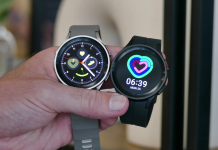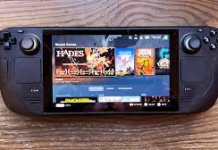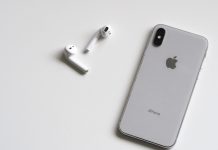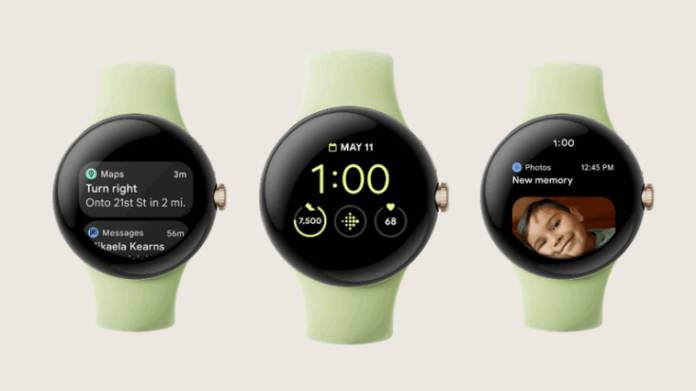Why did Google delay the development of a smartwatch for so long? Rick Osterloh, Google’s VP of hardware and the man in charge of all things Pixel, responded with a single word when asked this question: Fitbit.
Without a top-notch health and fitness platform, which Google simply lacked up until very recently, it was unable to create the smartwatch it desired.
A few days before Google officially unveiled the new Pixel Watch and Pixel 7 phones, Osterloh tells me at Google Meet, “We wanted to develop a watch earlier.” He has a Pixel 7 and the impending Pixel Tablet at his desk, and he wears a Pixel Watch on his left wrist.
And if we hadn’t lacked what we perceived to be the necessary tools for health and wellness, we probably would have. Because of this, Google agreed to buy the fitness monitoring business in 2019 for $2.1 billion.
However, the acquisition didn’t close until early 2021, thus Google was unable to work on integrating or enhancing Fitbit features at that time.
What’s New?
However, things came together fast after Osterloh and his group was able to start collaborating with the Fitbit team. He claims, “The Pixel Watch idea was pretty straightforward.
It’s similar to providing excellent health and wellness information via the Fitbit app, integrating the greatest features of Google and its core apps into the tool, and then putting it all together in a stunning design.
In roughly that order, the Pixel Watch is intended to be a wonderful fitness tool, a stylish fashion accessory, and a Google Assistant on your wrist.
The health and fitness industry is currently the “killer app” for watches, according to Osterloh.
Google, though, sees the smartwatch as much more in the long run. Google envisions ambient computing as a future in which all of your devices function flawlessly in unison to simplify your life.
The system only functions if you have a laptop that can track your location, activities, and emotions.
Read In Depth
Even augmented reality glasses can’t fully comprehend you as the Pixel Watch can. Google will eventually regard the smartwatch as equally significant to the phone.
There is a valid cause for any sneaky déjà vu feelings you may be experiencing right now. This tale about the potential of smartwatches and Google’s outlook on a more individualized computing future has been told before.
Nearly ten years ago, Google had a lot of big ideas for smartwatches, and those ideas have essentially come true. However, it was Apple that put Android watches to the test because the Apple Watch was a success whereas Android watches were mainly a failure, and Google didn’t even make its own flagship product.
This narrative, which focuses on the possibilities of smartwatches and Google’s optimism for a more individualized future of computing, is not new.
Google is now vouching once more for the seriousness of smartwatches. The vision remains expansive and fascinating.
Google’s Take
However, Google has a reputation for ruthlessly killing off products, often after vehemently defending them up until the point of cutting them off.
Will anyone once again have enough faith in Google to accept their vision? Do they even need to?
Yes, says Osterloh. He is ready to demonstrate this. As the firm gets ready to release the seventh version of the Pixel phone, anticipate it to be available in the smartphone market already.
He claims that no one questions Google’s commitment to smartphones any longer, but notes that “some of these categories are new to us, and we have to share the same determination in those categories.
And that’s what we plan to accomplish. The success of the Pixel Watch as the greatest Fitbit ever is what Google needs more than anything else. That might provide Google the necessary time to create the smartwatch it has in mind.
According to Google, the Pixel Watch is a vital component of its next environmental computing. We’ll see what happens with this.
The Future Once More
Google’s initial attempt into smartwatches started off fairly well. Early in 2014, when there were rumors of an “iWatch,” but before the Apple Watch was actually announced, the business unveiled the Android Wear software platform.
LG, Motorola, Samsung, and other companies declared their intention to produce Android smartwatches almost shortly.
Sundar Pichai, who was then the head of Android, outlined the benefits of wearables during the I/O Developer Conference that year.
He asserted that Google had a special chance to “deliver a seamless experience across all your connected devices” since “users are increasingly living in a multi-screen environment.”
He outlined four guiding principles for Google’s strategy in this ecosystem: everything must be excellent, speech is a fundamental input method, and your phone is the centre of the universe.
The following 20 minutes were spent by David Singleton, who was at the time Android’s director of engineering, outlining how Android Wear will operate.
What’s More?
Developers will have access to “exactly the same tools we’re already acquainted with on Android phones and tablets,” he said, calling the smartwatch “a powerful computer small enough to wear comfortably on your body all day.”
It unveiled three brand-new gadgets from Samsung, LG, and Motorola while indicating that there would be many more soon.
It received the same buzz as Google-powered smartwatches. The firm appeared to have completely forgotten about the platform over the course of the subsequent half-decade, only to return with a few upgrades and the assurance that it still cared about wearables before disappearing once more.
Later that year, Google introduced Wear OS 2.0, renaming Android Wear to Wear OS. Even then, there were few noteworthy Wear OS devices, few noteworthy new feature updates, and little indications that Google was making investments in its wristwatch company.
When Google released Wear OS 3 alongside Samsung’s Galaxy Watch 4 in 2021, it appeared that Google was happy for Samsung to be the primary rival to Apple in terms of hardware. He even seems pleased that a business wanted to produce this hardware.
You need to understand that Google’s smartwatch strategy hasn’t changed at all; the only thing that has changed is how passionately Google seems to be pursuing it.
Digging Into More Details
Pichai’s views regarding context and continuity, as well as the voice’s influence, remain valid and essential to the strategy.
Google no longer sees your phone as the slab of glass in your pocket, but rather as the connective tissue for all of your gadgets, thanks to Assistant and its cloud services.
However, Google was essentially correct about smartwatches nearly ten years ago. And while Apple has validated Pichai’s views, Google doesn’t appear motivated to make an effort.
Smartwatches are fitness and health gadgets for the time being. And Google needs to compete in this generation if it hopes to win the following one.
But by 2018, Google appeared to have come to the idea that while smartwatches might someday replace computers, they aren’t there yet.
Smartwatches are fitness and health gadgets for the time being. And Google must participate in this generation if it hopes to win the following one. And to do that, the Pixel Watch needs to be upgraded to a pretty powerful Fitbit.
Fitbit’s Pixel
Google made other smartwatch investments in addition to purchasing Fitbit. A few months prior to that acquisition, it agreed to pay $40 million for a portion of the R&D team and some of the smartwatch technology from Fossil.
It persuaded Samsung to combine Tizen, a wearable operating system, with Wear OS in 2021. The business had made a clear commitment to the idea that wearables were worthwhile for Google under Osterloh.
But the Fitbit agreement actually made Google’s plans public. The team started working on integrating its hardware and software into the Pixel Watch as soon as the transaction was finalized.
The job was “fast and furious,” according to Osterloh.
Is It Really The Future?
The two teams discovered an unexpected number of ways they could complement one another: While Google’s AI research teams have been working on ways to repair flaws and improve the data coming from the same type of sensors, Fitbit has spent years developing its system to understand signals from the light sensors in its devices.
According to Osterloh, “one of the things we did in developing this product was to combine a lot of work in our Google AI research team with Fitbit’s algorithm work to develop a heart-tracking baseline that is very close to what you get from a chest strap,” which is ordinarily the best source of body biometric data.
Osterloh, who claims to have been a Fitbit user for ten years, has been using a chest strap and a Pixel Watch at the same time to test the sensors. “The accuracy is astonishingly high.”
The Pixel Watch could compete with the Apple Watch because to its sensors, particularly for heart rate. Vjeran Pavic/The Verge image
Conclusion
The dual processor configuration of the Pixel Watch was also designed with health tracking in mind and has certain Fitbit design cues.
According to Seang Chau, vice president of the Android team, “We have the core SoC running Android, but then we have an MCU (short for microcontroller unit), similar to Fitbit, that allows us to capture second readings of heart rate constantly.”
The Pixel Watch and Fitbit both measure heart rate more frequently than the Apple Watch, which typically does so every five minutes.
Since heart rate is the foundation of all the fitness data we are using, we are now able to focus more on the health elements.
The two teams also collaborated to wire background data so that the Pixel Watch’s blood oxygen and heart rate sensors are automatically powered to a user’s Fitbit account.
This was done in addition to integrating the Fitbit app into the Pixel Watch’s tiny, rounded UI. Your heart rate, “Sleep Score,” “Daily Readiness Score,” and all of your training data are stored and shown by Fitbit.








